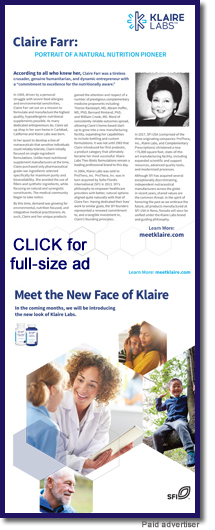Page 1, 2
For instance, some people with Lyme disease might first need some detoxification therapy or hormonal support to balance their body or to help them get strong enough to mount an effective response against the microbes and better respond to the treatments. Or, they might have another health condition that is a bigger cause of their symptoms and which needs to be addressed first. This might include things such as mercury toxicity from dental amalgams, a parasitic infection, or another major stressor that needs to be unloaded from the body so that it can more effectively combat the Lyme infections.
Dr. Minkoff provides a good analogy about the importance of prioritizing treatment. In an interview with me, he said, "Imagine that your best friend is with you on a trip through the jungle. He goes to the bathroom and gets lost. You go to look for him and you find him lying on his back, unconscious. When you look at him, you see red ants crawling up one of his arms. On his other arm, there is a tarantula. Then, you see a boa constrictor on one of his legs, and a black panther walking up the other leg, ready to bite his leg off."
"So, what do you do? Get the panther off of his leg first! Because it will take a little while for the snake to hurt him, and the tarantula and red ants can wait. You have to go after the biggest threat to your friend. So, you get the panther off of him first, then the boa, followed by the tarantula and then the ants. But if you do it in the wrong order, your friend will suffer. It's the same with treating people who have Lyme disease."
Prioritizing treatment from the greatest to the least important threat to the body is essential; and as I mentioned, most chronic diseases nowadays, including Lyme, aren't just caused by one thing. All of us who have health challenges carry around within us a unique cocktail of microbes and environmental contaminants and have organs and systems that are compromised in different ways.
Nonetheless, if you are a patient reading this and wondering what type of antimicrobial treatment would be best for you, know that all types of treatment have pros and cons in terms of effectiveness, cost, convenience, and side effects. And you can't always know what will work best for you, but you want to work with a doctor who understands what you, as an individual need, and who will prescribe treatments according to those needs, rather than according to a predefined toolbox or whatever happens to be fashionable in medicine.
 Antibiotics may have the longest history of use, but the side effects of long-term use can be significant. They deplete the body of healthy flora, or the friendly bacteria that resides in the gut and on the surface of the skin. These bacteria help to maintain a healthy immune system so long-term antibiotic use may compromise the gut and immune system over the long haul. They can also cause Candida overgrowth, which leads to other problems in the body. Antibiotics may have the longest history of use, but the side effects of long-term use can be significant. They deplete the body of healthy flora, or the friendly bacteria that resides in the gut and on the surface of the skin. These bacteria help to maintain a healthy immune system so long-term antibiotic use may compromise the gut and immune system over the long haul. They can also cause Candida overgrowth, which leads to other problems in the body.
Healthy microbes even play a role in helping to maintain the body's circadian rhythm. This is something that I discovered for myself when I could no longer go to bed before midnight after a year of taking antibiotics. To this day, my "new" circadian rhythm has me asleep at 1 AM most nights, instead of 11 PM, as before. Yet some Lyme doctors will tell you that antibiotics are still necessary for some people, and perhaps especially, as Dr. Anderson noted, in cases of very aggressive Lyme disease.
The good news is, more and better options for effective Lyme disease treatment are continually emerging, and doctors seem to be finding new ways to incorporate these tools into their practices. You might be one of those who respond exceptionally well to antibiotic therapy, but if not, be encouraged – there are many other viable and effective treatment options out there.
I happen to believe as Dr. Patel; if you are doing enough things to support the recovery of your body, on some level it may not matter as much whatspecific tools you use to combat the infections. As I have learned through my interviews with many Lyme-literate health care practitioners, rebuilding the body from the ground up, and addressing the root causes of disease (beyond Lyme) are key. Once you do those things, then eliminating the Lyme microbes becomes much easier, regardless of which tool you use to do that.
Page 1, 2
 Connie Strasheim is a medical researcher and writer, and author, co-author and/or ghostwriter of ten wellness books, including New Paradigms in Lyme Disease Treatment: 10 Top Doctors Reveal Healing Strategies that Work. (www.NewLymeTreatments.com). She collaborates with some of the world's top integrative doctors to write her books and articles. She is also an editor for the Alternative Cancer Research Institute and Pro Health's Lyme disease research and patient advocacy site. She hosts a monthly prayer conference call group for those with chronic health challenges, believing that prayer is powerful for healing. To learn more about Connie's work, visit www.ConnieStrasheim.org. Connie Strasheim is a medical researcher and writer, and author, co-author and/or ghostwriter of ten wellness books, including New Paradigms in Lyme Disease Treatment: 10 Top Doctors Reveal Healing Strategies that Work. (www.NewLymeTreatments.com). She collaborates with some of the world's top integrative doctors to write her books and articles. She is also an editor for the Alternative Cancer Research Institute and Pro Health's Lyme disease research and patient advocacy site. She hosts a monthly prayer conference call group for those with chronic health challenges, believing that prayer is powerful for healing. To learn more about Connie's work, visit www.ConnieStrasheim.org.
|
![]()
![]()
![]()
![]()







 Connie Strasheim is a medical researcher and writer, and author, co-author and/or ghostwriter of ten wellness books, including
Connie Strasheim is a medical researcher and writer, and author, co-author and/or ghostwriter of ten wellness books, including